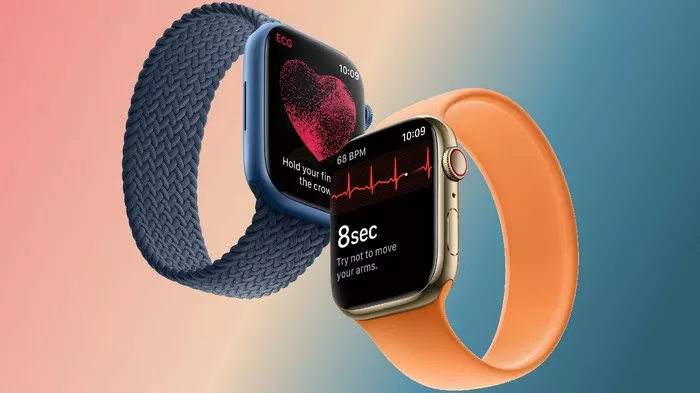The Apple Watch is not just a stylish accessory; it’s a powerful health and fitness tool that includes a built-in heart rate monitor. Monitoring your heart rate with an Apple Watch can provide valuable insights into your cardiovascular health and help you maintain an active and balanced lifestyle. In this comprehensive guide, we’ll explore how to effectively use your Apple Watch to monitor your heart rate.
I. Understanding the Apple Watch Heart Rate Monitor
1. Built-In Optical Sensor: The heart rate monitor on the Apple Watch utilizes an optical sensor on the back of the watch that continuously measures your heart rate throughout the day. This sensor uses green LED lights to detect the amount of blood flowing through your wrist, providing real-time data.
2. Heart Rate Variability (HRV): In addition to your resting heart rate, the Apple Watch measures heart rate variability (HRV), which indicates the variation in time between successive heartbeats. HRV can offer insights into your body’s stress levels and overall well-being.
II. Enabling Heart Rate Monitoring
3. Automatic Monitoring: By default, your Apple Watch automatically monitors your heart rate throughout the day, providing a continuous stream of data. To enable this feature, ensure that the Heart Rate app is visible on your watch face, or access it from the App Grid.
4. Custom Workouts: During workouts, the Apple Watch intensifies heart rate monitoring to provide more accurate data. When initiating a workout session through the Workout app, the watch tailors its monitoring to the specific exercise, enhancing its ability to capture changes in heart rate.
III. Reviewing Heart Rate Data
5. Heart Rate App: Access the Heart Rate app on your Apple Watch to view your current heart rate and a graph displaying your recent heart rate history. This app provides a quick snapshot of your heart rate and trends over time.
6. Health App on iPhone: For a more detailed analysis, open the Health app on your iPhone. Navigate to the “Browse” tab, select “Heart,” and explore various metrics, including resting heart rate, walking heart rate average, and recovery metrics.
IV. Setting Heart Rate Notifications
7. High and Low Heart Rate Alerts: You can set up your Apple Watch to notify you if your heart rate goes above a certain threshold or falls below a specified range. These alerts can be valuable indicators of potential health issues or intense physical exertion.
8. Irregular Rhythm Notifications: The Apple Watch can also notify you if it detects an irregular heart rhythm, potentially identifying signs of atrial fibrillation. This feature is particularly useful for monitoring and addressing potential cardiac issues.
V. Optimizing Heart Rate Accuracy
9. Proper Fit: Ensure that your Apple Watch is snug but comfortable on your wrist for optimal accuracy. A loose fit may result in inaccurate heart rate readings.
10. Wrist Tattoos and Environmental Factors: In some cases, wrist tattoos and environmental factors can affect the accuracy of the heart rate monitor. If you experience inconsistencies, consider adjusting the watch’s position on your wrist or consulting Apple’s support resources.
VI. FAQs on Apple Watch Heart Rate Monitoring
Q1: How often does the Apple Watch measure heart rate throughout the day?
The Apple Watch measures heart rate continuously throughout the day, providing a comprehensive overview of your heart rate patterns and variations.
Q2: Can the Apple Watch detect serious heart conditions?
While the Apple Watch’s heart rate monitor is a valuable tool, it is not a substitute for professional medical advice. It can, however, detect irregular heart rhythms and provide alerts that may prompt further evaluation by a healthcare professional.
Q3: Does the Apple Watch work for all types of workouts?
Yes, the Apple Watch is designed to monitor heart rate for a wide range of workouts. It utilizes specific algorithms for various exercise types to ensure accurate tracking during different activities.
Q4: Can I share my heart rate data with my healthcare provider?
Yes, you can share your heart rate and other health data with your healthcare provider through the Health app on your iPhone. This can facilitate more informed discussions about your overall health.
Q5: Does the heart rate monitor work during water activities?
Yes, the heart rate monitor on newer Apple Watch models is water-resistant and can provide accurate heart rate readings during water-based activities, such as swimming.
Q6: How can I improve heart rate monitor accuracy on my Apple Watch?
To improve accuracy, ensure a proper fit, avoiding a too-tight or too-loose band. Consider adjusting the position on your wrist, especially if you have wrist tattoos or encounter environmental factors that may affect readings.
In conclusion, leveraging the heart rate monitoring capabilities of your Apple Watch can contribute significantly to your overall health awareness. By understanding how to use and optimize this feature, you can gain valuable insights into your cardiovascular health, track your fitness progress, and receive timely alerts for potential irregularities.

